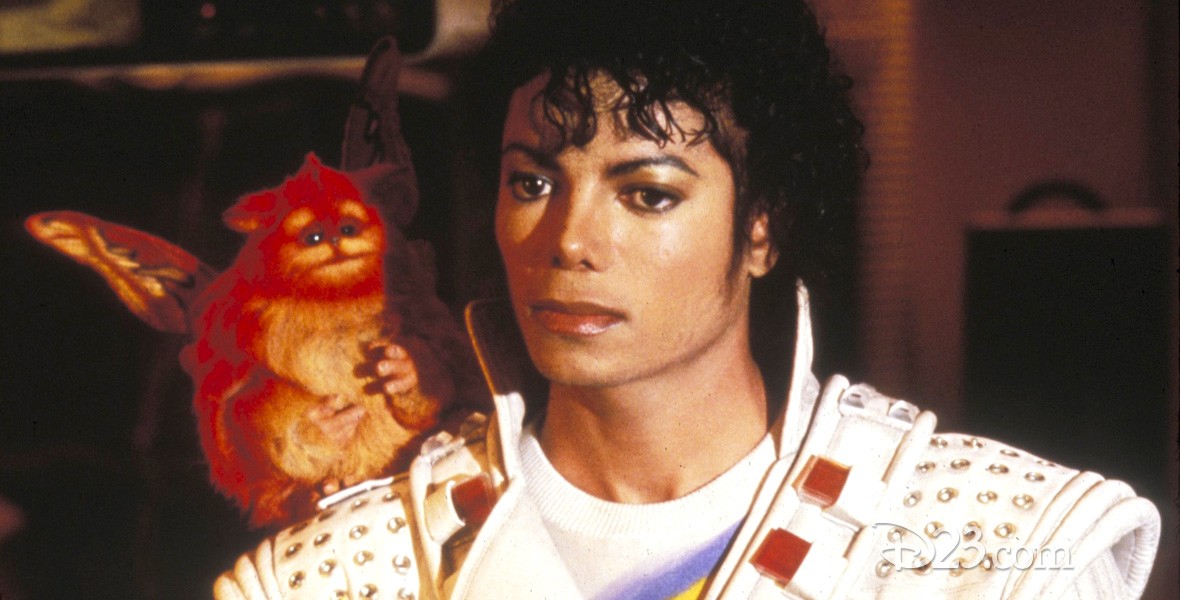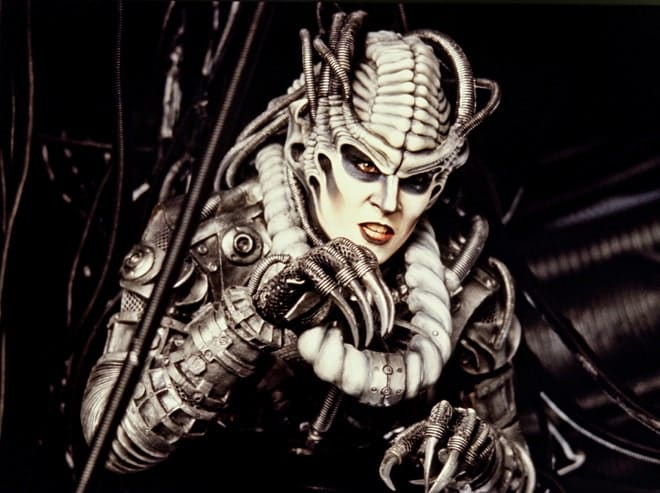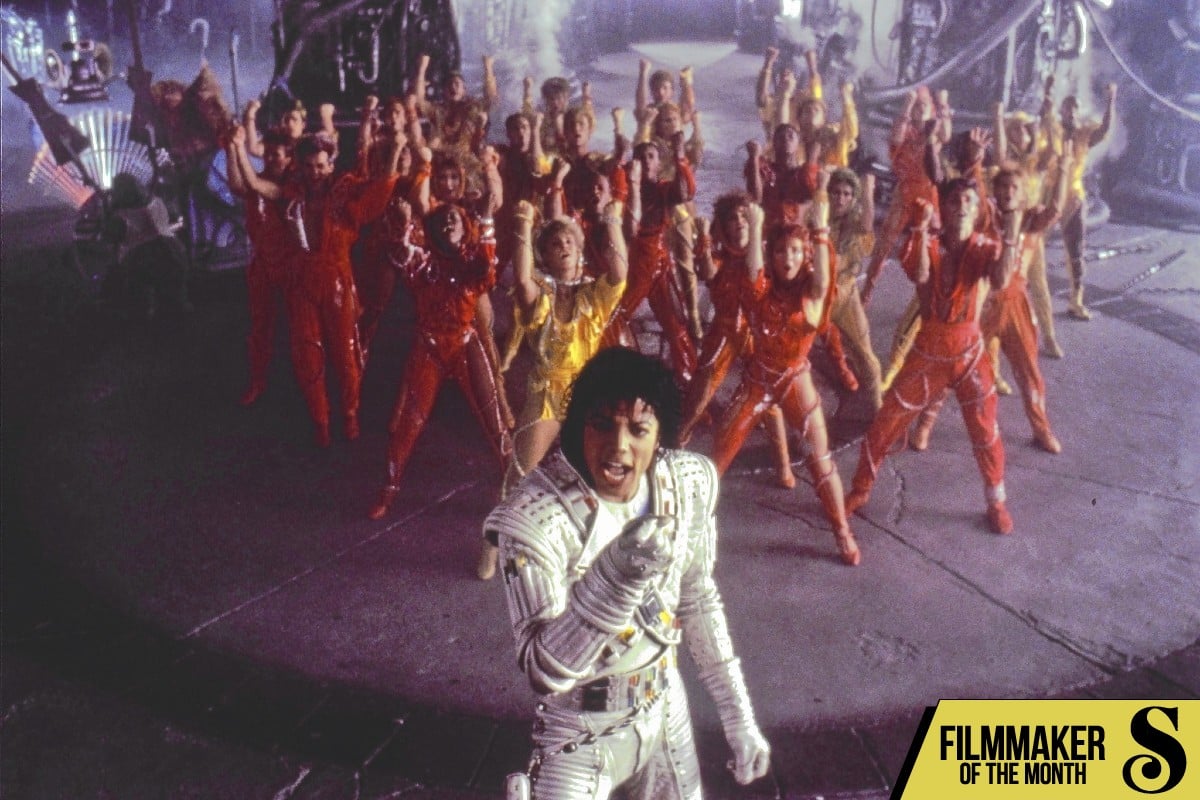Every month, we at The Spool select a filmmaker to explore in greater depth — their themes, their deeper concerns, how their works chart the history of cinema, and the filmmaker’s own biography. For April, we revisit both the game-changing hits and low point misses of Francis Ford Coppola. Read the rest of our coverage here.
The Eighties were a trying time for the generation of film school brats who upended American cinema in the previous decade. This was especially true in the case of Francis Ford Coppola, who embarked on what would be his most varied, troublesome, experimental decade as a filmmaker. And as far as those experiments go, perhaps the most bizarre and inexplicable was Captain EO, the 17-minute sci-fi space oddity Coppola helmed for Disney theme parks, starring Michael Jackson. Yes, you just read all of that right. This is a real thing that happened.
So how did these strange artistic bedfellows come together in the first place? Coming off of maybe the greatest imperial era of any filmmaker in history (imagine making The Godfather Part II and The Conversation in the same goddamn year), Coppola decided to cash in all of his chips and walk away with what he’d always desired: total creative and financial autonomy. His Apocalypse Now follow-up would be One from the Heart, a splashy, neon-soaked musical fantasy. Coppola financed the film’s $26 million dollar budget himself and released it through his own company, Zoetrope Studios.
It was a big gamble, and sadly, an even bigger loss. Upon release in 1982, the film was a colossal bomb, earning a shockingly paltry $636,796 at the domestic box office. The financial sting was so brutal that Coppola was forced to sell the Zoetrope Studios property in 1983. He would spend the following years taking any paying gig to make up for the money he lost on One from the Heart, directing everything from two back-to-back S.E. Hinton adaptations and a revisionist gangster epic to an episode of Shelly Duvall’s Faerie Tale Theatre. Eventually, help arrived in the form of an offer from the House of Mouse.

As it turns out, Disney needed Coppola just as much as Coppola needed Disney. It was 1984, and Michael Eisner, the CEO of Disney, and Jeffrey Katzenberg, the head of Disney’s film department, were desperately trying to bring in 4D film attractions based around A-list celebrities. Lucky for them, the biggest pop star in history happened to be a Disney fanatic. Hot off of the once-in-a-lifetime success of Thriller, and looking to break into movies, Michael Jackson got in touch with Katzenberg.
After bandying around a few ideas, including a short film about Jackson touring Disneyland after hours (which he reportedly often did in real life), and a live-action take on Peter Pan, they eventually settled on a sci-fi musical. Katzenberg got in touch with George Lucas to produce, and Lucas, in turn, brought on Coppola, knowing full well that his old USC experimental film buddy needed the dough.
Though the idea of Coppola helming what would essentially be a glorified music video for the King of Pop seems odd today, at the time it wasn’t so out of this world. The MTV era saw plenty of 70s auteurs breaking into the business of music videos: once Bruce Springsteen finally decided to make clips for his Born in the USA singles, he hired the likes of John Sayles and Brian De Palma.
And then of course there was MJ himself, who had already revolutionized the form with the help of John Landis and would soon work with another of Coppola’s close friends, Martin Scorsese. One may also think that just because this was a short film that would not be commercially released, that Coppola may have been fine with phoning it in. Instead, Coppola proved once again that he only knew one approach to filmmaking, which was, as the kids today say, doing the most. Captain EO would be no exception.
Coppola cowrote the screenplay with Lucas, and named the titular Captan EO after Eos, the Greek goddess of dawn, a reference any kid was sure to pick up on. He brought on his Apocalypse Now and One from the Heart DP, Vittorio Storaro, to supervise the film’s complex lighting, Industrial Light and Magic to create the film’s visual effects, and composer James Horner to write the film’s score.
This infuriated Disney’s team of Imagineers, who were not used to ceding their work to outsiders. Not to mention, in true Coppola fashion, the film went both over schedule and over budget. In fact, at the time, Captain EO was the most expensive film ever made for its run time, costing a whopping $1.76 million per minute. So…was it worth it?
Here’s the plot of Captain EO, insofar as Captain EO even has a plot. Jackson stars as, you guessed it, Captain EO, a ragtag space buccaneer sent on a dangerous mission to deliver a gift to the Supreme Leader (Anjelica Huston), an evil space queen with some PG-13 H.R. Giger tentacles. EO leads a ragtag crew, including his adorable sidekick Fuzzball (a fat cat with butterfly wings, natch); the two-headed navigator slash pilot Idy and Ody; two robots, Major Domo and Minor Domo; and the tubby bumbling idiot Hooter, who is literally just Max Rebo, but everyone calls him Hooter. So much of this film feels like Coppola low-key making fun of Lucas for Star Wars, which all things considered is a dick move.

Our heroes land on the Supreme Leader’s dark, dank, trashy planet, and are immediately captured. The Supreme Leader is going to turn them into garbage cans, until Captain EO is like, hey lady, you know that gift we brought you? It’s the gift of MUSIC! At this point, Jackson breaks in to the first of his two original songs for the film, “We Are Here to Change the World.”
True to its title, the power of music turns the garbage planet into a technicolor Greco-Roman paradise and transforms the Supreme Leader into a beautiful goddess. As a way of saying you’re welcome, Jackson closes out the film with another original song, “Another Part of Me,” and the cast waves goodbye and walks into the sunrise for what feels like a full five minutes.
Captain EO first opened at Disney’s Tomorrowland on September 12, 1986, and ran until 1994. It would only be screened outside of Disney’s theme parks one time, on MTV in 1996. Following Jackson’s untimely death in June of 2009, Disney brought Captain EO back to its theme parks worldwide that following December for a limited engagement.
Coppola proved once again that he only knew one approach to filmmaking, which was, as the kids today say, doing the most.
Coppola, for his part, soldiered on. He made a wide array of films: some were well-received, others not so much. But in the end, financial troubles continued to haunt him. In 1990, Zoetrope Studios filed for Chapter 11 bankruptcy, bringing to an end the sad saga set into motion at the start of the decade. The glory days were long gone.
These days, Captain EO is relegated to footnote. Given the recent public reckoning with Jackson’s alleged history of child sexual abuse, it is unlikely that Captain EO will ever see the light of day again, at least not on Disney’s dime.
As for Coppola, these days he’s more likely to hang out at his vineyard than get behind the camera, and even if he did, it’s unlikely that whatever he made would remind viewers of this strange thing. More than likely, Captain EO will remain floating unmoored through space, a bizarre footnote in a great filmmaker’s strangest era.

